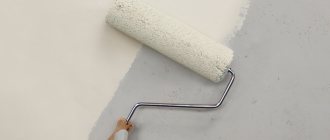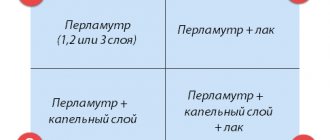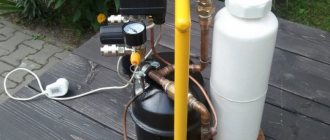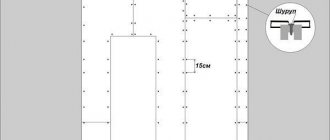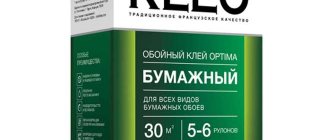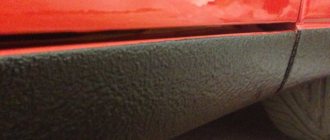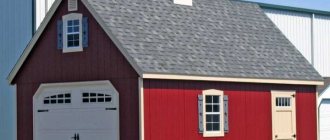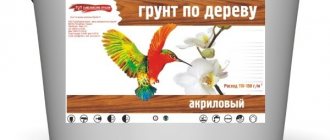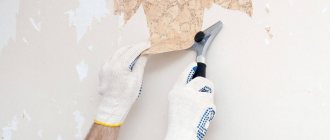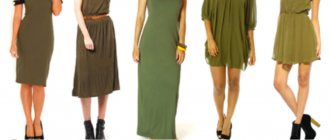The quality and quantity of material for body paint repair are directly related: enamels have different covering abilities, but the technology for applying the selected material is taken into account when calculating paint consumption for painting a car. There are nuances to using a brush and a spray gun: by using the right or correctly configured tool, you can reduce the amount of wasted auto enamel to the minimum specified by the manufacturer. Masters claim that this parameter is primarily influenced by experience, but the problem of calculation often faces novice painters, so in the calculations below it is assumed that the painter acts without fanaticism and serious miscalculations.
Paint consumption for painting a car. Table of averages
Over time, the factory paint on a car loses its attractiveness. Its protective characteristics are deteriorating. This can occur as a result of environmental influences on the paint layer (heat, frost, moisture, temperature changes), or damage of various types. As you know, painting a car can restore its original appearance and improve its protective characteristics.
Factors that determine paint consumption per car
Painting at a service will entail considerable expenses; it is cheaper to do it yourself. But when choosing the latter option, you need to have certain skills and calculate the paint consumption for the car. The quantity is influenced by several factors:
- original body color and new enamel
- car dimensions
- tools
- area to be painted (entire or separate area)
- paint viscosity
- personal experience in coloring
- surface preparation
Machine size
It is quite difficult to accurately determine how much paint is needed to paint a car. Below is the approximate paint consumption for individual parts.
| Detail | Consumption in ml/l |
| Door | 200 |
| Wing | 150 |
| Trunk | From 300 to 400 |
| Roof | 400 |
| Bumper | 300 |
| Back panel | 250 |
| Radiator grille | 100 |
| Threshold | 150 |
On average, to paint a car , you will need from 2 to 3 liters of enamel. A small minibus or Gazelle will require no more than 5 liters, for jeeps, vans, crossovers, business class cars - 4 -5 liters, segment comfort - about 3.5 liters.
Paint color and original body color
The consumption of paint and varnish material will depend on the original color of the car. If the color is contrasting with the original, more paint will be used than with standard coloring. You need to know: dark colors do not overlap well with light shades.
It is necessary to apply paintwork in several layers. For example, red or yellow do not cover the substrate well. It may take about 9 or 10 coats of paint to completely cover. Black, green and their shades cover the base well.
Paint viscosity
Of all the parameters when painting a car, the most significant is the viscosity of the paintwork material. It depends on how correctly the coloring composition was diluted. Most cans indicate the proportions that must be followed when mixing the activator and paint. It could be 2:1 (or another value). In this case, dilute 2 parts of the dye and 1 part of the activator.
It is strictly forbidden to add all the ingredients by eye. Such an experiment can lead to the paint being either too thick or thin. In the first case, when painting, an “orange peel” effect occurs, and in the second, drips form.
If you don’t have a professional measuring tool, you can use a regular ruler. It is placed in a container and a coloring agent is poured. The ruler scale determines the amount of activator that needs to be added.
Important: Viscosity may depend on the room temperature, as well as the surface of the parts. When the temperature in the garage is cold, “tears” form on the painted surface. It is better to perform coloring at a temperature not lower than +23C.
Effects created by auto enamel
In order to paint a car you need a base car enamel. Each type of classification has special effects that are reflected on the body.
Glossy
Glossy surface is available on almost all car enamels. Alkyd paints are just not capable of creating a glossy effect. The gloss is formed due to the rapid polymerization that occurs when drying.
Matte
Applying enamels to cars without shine is called a matte effect. For a car, this type is not used on the entire body, but only to highlight a particular area. The best enamel with a matte effect is alkyd.
Nacre
The pearlescent effect is achieved by absorbing sunlight during the day. Thanks to this, the car shines and attracts special attention with its appearance.
Metallic
Metallic is achieved in the form of enamel, which has a reflective pigment. This car painting is difficult to achieve due to the need to mix it with pigments. Therefore, this matter must be trusted to professionals who know their business. You can achieve this effect even if the surface of a part of the car is matte.
Chameleon
This effect is very popular among car enthusiasts. It is achieved with three-layer painting, only thanks to “chameleon” enamel. If you look at the car from different angles, it seems that it is painted in different colors.
Chirallic
This effect is called artificial pearlescent. To do this, you need to paint it with the appropriate auto enamel, which will ensure long exposure. Can only be applied to a surface that is free of dirt and rust. The basic colors used for painting are red and blue. These are the 2 most elegant and beautiful colors in this model.
Sandy effect
Kandy coating is the most difficult job for a professional. Difficulty in work is replaced by incredible beauty and efficiency. The color and tone of the car will fascinate and catch your eye. There are approximately 20 types of colors. The only disadvantage of this type is that the staining layer is too small.
Phosphor
Duminofor is a chemical substance that is resistant to external influences. In addition to the fact that it protects the car from corrosion, the paint will last for 20 years or more. This paint has a luminous effect and can glow in the dark.
Important. The effects of various auto enamels depend on the method of application and the chemical composition of the enamel itself. To achieve the desired effect, you need to know how to use the paint, in what proportions to apply it, and adhere to a certain intensity.
How many liters of paint do you need to paint a car?
Painting a car in a showroom is not a cheap pleasure.
But you can do it on your own if you practice a little first and become familiar with the basic rules of work. It is also very important to calculate the correct amount of paint that will be needed for your car. Why this is so important and how to find out how much it costs to paint a car completely, you will find out further.
What to consider when calculating
If you go to the store to buy paint, you will realize that it is quite expensive. Therefore, there is no point in overpaying by buying extra goods; it is enough to make the correct calculation. At the same time, if during work it turns out that there is not enough paint, you will have to buy it additionally.
But then it can be quite difficult to choose the right shade, because even in different batches they can differ.
To understand how much dye you need, you need to consider the following factors:
- car model and its condition;
- type and packaging of paint;
- the presence or absence of tools necessary for painting;
- time of year, weather conditions, location of work.
Having examined the most important points in detail, it will be much easier to understand the issue of coloring.
How to make the correct calculations for varnish and paint
After the paint has been applied and dried, the surface is usually varnished. This helps achieve an attractive shine and improves the overall appearance of the car. Keep in mind that you need to purchase products from the same brand so that their composition and consistency are as similar as possible, and the consumption will be less.
Color also plays a big role in painting. Red, blue and yellow are the worst to apply; they consume much more. Therefore, if you want to paint the car completely, it is better to give preference to green or gray. How many layers are needed to achieve the desired result? Usually the paint is applied to the car in 2-3 layers, based on this, you need to make a calculation.
But with varnish the situation is a little different. Its calculation is carried out based on the composition. If the substance is made on the basis of synthetic resin, its consumption will be minimal. And acrylic and nitro-combined products have slightly worse coverage.
Typically, the dye is applied to the car using a spray gun. How much money you spend also depends on its model. When purchasing, pay attention to the transfer coefficient data of the spray gun. That is, some of the paint will still remain on the walls of the device, some will be consumed during the spraying process, etc.
Although this is not such a large volume, it also needs to be taken into account!
You can also use a can of paint or varnish for painting. To spray them, you don’t need any additional tools, and the quality of the aerosols is at a high level!
Usually the can contains information about how much area of the car it can be painted. But it cannot be called 100% accurate, because how much product you spend will depend on your skills, layer thickness, quality of the base, etc.
Detailed information
For high-quality painting of a car you need 2-4 cans per 1 square meter. m. To find out the exact equivalent, take into account all the factors that were described above. This will help you calculate exactly how much paint you will need.
If you want to paint individual parts, the calculation for them will be as follows:
- small part (wing, door, etc.) – 0.15 l;
- middle part (bumper) - about 0.25 l;
- large part (hood) - about 0.5 liters.
When you varnish the surface, the consumption of the substance will be exactly the same. To make a two-layer application, the amount of substance must be doubled.
Based on these data, we can conclude that a medium-sized sedan needs about 2 liters of paint and the same amount of varnish.
Painting rules
We have already said that product consumption is affected by weather conditions, location of work, etc. Here are some important rules:
- the temperature of the air, painted elements, paint and varnish should be at the same level;
- You cannot heat the paint or elements of your car before painting it;
- sufficient time will allow you to avoid drips;
- In order for the paint to lay evenly, you need to use a “sticky napkin”, which will remove particles of debris and dust;
- wear a special suit and face mask
During work, adhere to painting technology so as not to waste material. If you practice a little on old parts, you will realize that painting is not difficult. After a successful upgrade, all that remains is to thoroughly polish the car and you can get behind the wheel again!
Detailed information
For high-quality painting of a car you need 2-4 cans per 1 square meter. m. To find out the exact equivalent, take into account all the factors that were described above. This will help you calculate exactly how much paint you will need.
If you want to paint individual parts, the calculation for them will be as follows:
- small part (wing, door, etc.) – 0.15 l;
- middle part (bumper) - about 0.25 l;
- large part (hood) - about 0.5 liters.
When you varnish the surface, the consumption of the substance will be exactly the same. To make a two-layer application, the amount of substance must be doubled.
Based on these data, we can conclude that a medium-sized sedan needs about 2 liters of paint and the same amount of varnish.
Paint color and original body color
p, blockquote 7,0,0,0,0 –>
The amount of paint required to paint a car depends on what color the car will be painted and what the original color of the surface to be painted is. If the body panel has a color contrasting to the one being sprayed, then more paint will be needed. Colors such as yellow, red, and blue are low opaque, so more paint may be needed to cover the original color. If the paint has low coverage, then it is necessary to apply more layers to paint the substrate. For example, when painting with red and yellow paint, up to 10 or more layers may be required.
p, blockquote 8,0,0,0,0 –>
Colors such as black, white, and bright green have good hiding power.
p, blockquote 9,0,0,0,0 –>
If a car is repainted due to numerous minor defects and scratches that are sanded off during preparation of the body for painting, then less paint will be used than when changing the color of the car.
p, blockquote 10,0,0,0,0 –>
The color of the substrate will affect the final shade of the paint.
p, blockquote 11,0,0,0,0 –>
Note: Hiding power is the ability of paint, when sprayed, to completely cover the color of the surface, that is, to cover the color of the substrate with the sprayed color. Thus, the more opaque the paint, the less it will be needed to paint the part.
p, blockquote 12,0,0,0,0 –>
What determines the required amount of a substance?
Before purchasing paint, you need to at least roughly calculate how much you will need. The average consumption for aerosol dyes in cans is approximately 200-300 milliliters per square meter, but this amount can vary significantly under the influence of various factors. Substance consumption is affected by:
- Quality of the substance. Depending on how high-quality chemicals the manufacturer uses, the quality of the application will depend. Therefore, it is worth paying attention to the manufacturer in order to purchase only high-quality chemical products, otherwise the waste of money will be unjustified.
- Paint color. The lighter the shade you choose, the higher the consumption, since you will need to apply more layers to obtain an even shade.
- Color of the surface to be painted. Accordingly, the darker the surface prepared for painting, the more layers will need to be applied to change this color. This is especially true when repainting dark surfaces into lighter ones.
- Absorbency of the material. The material being dyed greatly influences how much of the substance you will need to change its color. Materials with high absorbency will absorb chemicals quite intensively, so more of it will be required for high-quality staining.
All these nuances must be kept in mind when calculating the required amount of paints and varnishes. Considering these factors, there are several important advantages of spray paint in cans.
Painter experience
The amount of paint required to paint a car body also depends on the professionalism of the car painter. An experienced painter will set up the paint gun correctly and distribute the paint correctly. The paint should not be applied in the form of dust, but should spread well when it hits the surface. It is wiser to first paint over repair areas and replacement body panels that are a different color than the rest of the body. Then you can proceed to the step-by-step painting of all body parts.
p, blockquote 18,0,0,0,0 –>
What affects consumption?
Paint consumption depends on many components, the most obvious of which are the area of the surface to be painted and the type of paint coating planned to be used. To more accurately calculate the quantity, you will have to take into account many additional factors:
- the condition of the car, its color (if the car is painted over an old coating) or the color of the primer;
- selected dyeing technology;
- thickness of the coating layer;
- number of applied layers;
- brand, type, composition and color of the paint that will be used to paint the surface, its hiding power;
- features of setting up and operating the spray gun;
- paint density, compliance with proportions when mixing components, viscosity of the composition.
The composition of the paint coating and its technical characteristics differ from one manufacturer to another. It is recommended to use enamels, varnishes, primers, and solvents of the same brand for work. In this case, there will be no conflict of compositions, therefore, there will be no additional costs for reworking defects.
The consumption of paints and varnishes largely depends on the viscosity of the working mixture. Painting with a composition that is too thick will turn the surface into an orange peel, which car enthusiasts call shagreen, and a solution that is too thin will spread across the surface in smudges. To achieve the required viscosity, use a viscometer and follow the exact recommendations of the manufacturers. Moreover, all details are taken into account - from the sequence of mixing components to compliance with the temperature regime.
An equally important factor is the correct setting of the spray gun (paint gun), adjusting the pressure, air supply, its sufficient supply for uninterrupted operation and debugging the spraying method. Experience in using a paint gun reduces errors and waste of paint and varnish materials.
Setting up a spray gun for is one of the factors for the correct and effective consumption of lacquer materials
Proper preparation of the base will help reduce paint consumption - thorough priming of the surface of the part or the entire machine (preferably with a composition from one manufacturer) and fine-grained sanding to remove the smallest dust particles.
The hiding power of the enamel – the ability of paintwork materials to paint over previous layers – directly affects the consumption of material.
Advice. If the purpose of painting is to paint over the previous layers with the least amount of material, then it should be taken into account that green and white colors have the greatest coverage, and yellow, red, and blue have the least coverage.
